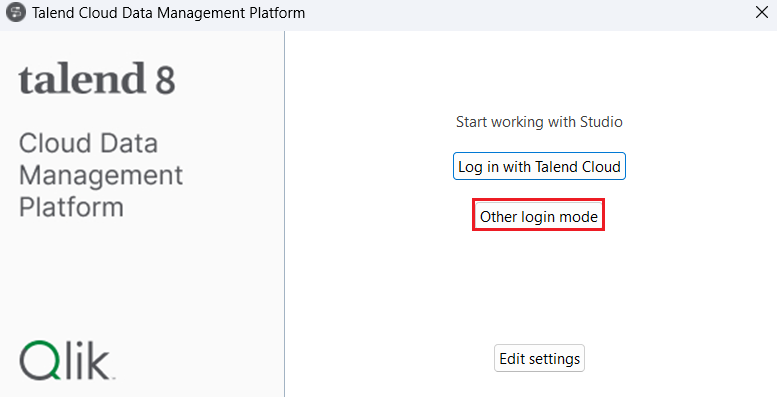Discover how a bimodal integration strategy can address the major data management challenges facing your organization today.
Get the Report →Connect to IBM Cloud Object Storage Data and Transfer Data in Talend
Integrate IBM Cloud Object Storage data with standard components and data source configuration wizards in Talend Open Studio.
This article shows how you can easily integrate the CData JDBC driver for IBM Cloud Object Storage into your workflow in Talend. This article uses the CData JDBC Driver for IBM Cloud Object Storage to transfer IBM Cloud Object Storage data in a job flow in Talend.
Connect to IBM Cloud Object Storage in Talend as a JDBC Data Source
You can follow the procedure below to establish a JDBC connection to IBM Cloud Object Storage:
- Add a new database connection to IBM Cloud Object Storage data: To add a new connection, expand the Metadata node, right-click the Db Connections node, and then click Create Connection.
- In the resulting wizard, enter a name for the connection.
On the next page, select Generic JDBC from the DB Type menu and enter the JDBC URL.
Register a New Instance of Cloud Object Storage
If you do not already have Cloud Object Storage in your IBM Cloud account, follow the procedure below to install an instance of SQL Query in your account:
- Log in to your IBM Cloud account.
- Navigate to the page, choose a name for your instance and click Create. You will be redirected to the instance of Cloud Object Storage you just created.
Connecting using OAuth Authentication
There are certain connection properties you need to set before you can connect. You can obtain these as follows:
API Key
To connect with IBM Cloud Object Storage, you need an API Key. You can obtain this as follows:
- Log in to your IBM Cloud account.
- Navigate to the Platform API Keys page.
- On the middle-right corner click "Create an IBM Cloud API Key" to create a new API Key.
- In the pop-up window, specify the API Key name and click "Create". Note the API Key as you can never access it again from the dashboard.
Cloud Object Storage CRN
If you have multiple accounts, you will need to specify the CloudObjectStorageCRN explicitly. To find the appropriate value, you can:
- Query the Services view. This will list your IBM Cloud Object Storage instances along with the CRN for each.
- Locate the CRN directly in IBM Cloud. To do so, navigate to your IBM Cloud Dashboard. In the Resource List, Under Storage, select your Cloud Object Storage resource to get its CRN.
Connecting to Data
You can now set the following to connect to data:
- InitiateOAuth: Set this to GETANDREFRESH. You can use InitiateOAuth to avoid repeating the OAuth exchange and manually setting the OAuthAccessToken.
- ApiKey: Set this to your API key which was noted during setup.
- CloudObjectStorageCRN (Optional): Set this to the cloud object storage CRN you want to work with. While the connector attempts to retrieve this automatically, specifying this explicitly is recommended if you have more than Cloud Object Storage account.
When you connect, the connector completes the OAuth process.
- Extracts the access token and authenticates requests.
- Saves OAuth values in OAuthSettingsLocation to be persisted across connections.
Built-in Connection String Designer
For assistance in constructing the JDBC URL, use the connection string designer built into the IBM Cloud Object Storage JDBC Driver. Either double-click the JAR file or execute the jar file from the command-line.
java -jar cdata.jdbc.ibmcloudobjectstorage.jarFill in the connection properties and copy the connection string to the clipboard.
![Using the built-in connection string designer to generate a JDBC URL (Salesforce is shown.)]()
A typical JDBC URL is below:
jdbc:ibmcloudobjectstorage:ApiKey=myApiKey;CloudObjectStorageCRN=MyInstanceCRN;Region=myRegion;OAuthClientId=MyOAuthClientId;OAuthClientSecret=myOAuthClientSecret;- Enter the path to the cdata.jdbc.ibmcloudobjectstorage.jar file, located in the lib subfolder of the installation directory.
![The connection to the JDBC data source. (QuickBooks is shown.)]()
- Right-click the connection and then click Retrieve Schema.
- Click Next with the default options to select the tables you want to import.
- Finish the wizard with the default options.
Output the Objects Table to a Flat File
You can follow the procedure below to transfer the Objects table to a flat file output component:
- In the Table Schemas node, drag the tables to the workspace.
- In the dialog that is displayed, select the tJDBCInput component.
- Next, drag a tFileOutputDelimited component from the Business Intelligence tab of the Palette into the workspace.
- Right-click the Objects tJDBCInput component and drag a vector to the output file.
![A simple transfer to a flat file. (QuickBooks is shown.)]()
Run the project to transfer the data.









